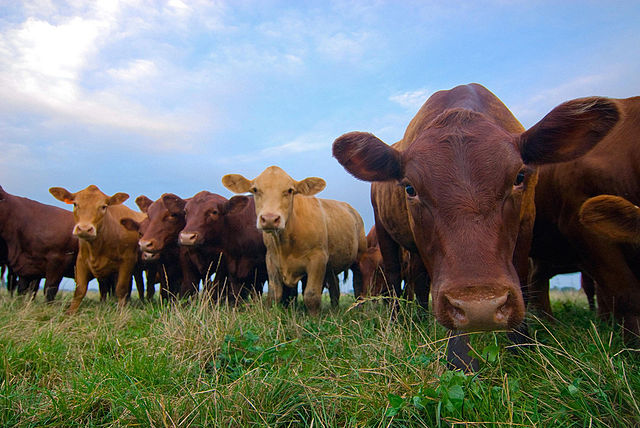After finishing mixed on August 21, 2024, U.S.’ cattle futures made a temporally comeback August 22 to finish strong via bargains. Though this gain would fall on the 23rd by at least 12 cents per pound, the preceding day’s strength was advance enough.
On the 22nd, bargain hunters, who believed cattle for sale were low, had scrambled to fill positions, edging the prices up.
This happened after the sales of August 20 had left what traders felt was cattle commodity shortage.
Statistics from the Chicago Mercantile Exchange (CME) for the 22nd show that feeder cattle for October delivery gained the most. Prices for the best-performing contracts were at $2.3425 a pound, or 2.58 cents above the August 21 price. Feeder cattle indicates heifers and young bulls ready for sale.
In contrast, a day earlier on the 21st, live beef cattle had performed mixed in both cash markets and in futures contracts.
Most traders had gained at least 75 cents on sales per pound while others had lost by maximum 97 cents. The loss part was, however, less pronounced than in July 2024, which had been a month of contractual lows.
Cash Trade Mixed, Cattle Futures Falter
At the same time, cash-based cattle trade in northern U.S. was more favorable than the southern one, according to Nasdaq.
While northern producers received between $2.93 and $2.95 a pound for beef cattle, southerners settled for between $1.83 and $1.84.
All the same, the southern cash figures best echoed the futures market range, then at $1.83 per pound on August 21.
Market Insider shows August 22’s futures price was at $1.82 a pound, a slight drop from $1.83 on the 21st.
However, on the 23rd, the loss for both southern U.S.’ cash offers and futures would enlarge by at least $0.12 a pound.
Factors Supporting Prices
Cash and futures prices of U.S.’ cattle were relatively strong in August due to currently cheap cattle feed, especially much-planted corn.
Whenever cattle feed gets affordable, it eases pressure on livestock prices which normally increase partly due to fattened animals.
Finally, it remains to see if the above U.S.’ cattle gains will hold much longer. For one, statistics show that beef demand by hoteliers is usually low during the oncoming Labor Day weekend in September. Be it as it may, the following statistics show that there is more to the American cattle sector than just prices.
United States Cattle Statistics
Cattle rearing in the United States is a multi-billion dollar industry. In 2023, it represented around 17% of the $520 billion in federal agricultural turnover, according to an estimate by USDA. The country prides as much in its cattle products’ turnover as in its massive stock. Regarding stock, the United States had 93,789,500 head of cattle in 2022, slightly more than 2021’s 92,076,600, according to FAOSTAT. The impressive count however reduced in 2023 to 89,274,000 due to rising feed and energy costs that induced cattle slaughter. This marked the largest drop in 5 decades. Despite the drop, the U,S. still had the fourth biggest herd globally after leader India, followed by Brazil and China.
What is the export/import value of live cattle from the United States?
The U.S. generally imports more head of cattle than it exports. In 2015, American live cattle exports were valued at $98.698 million, the 17th highest worldwide. In terms of imports, between January and August 2020, the U.S. imported 1.4 million head of cattle. Most live cattle came from neighboring Mexico, which provided approximately 62% of all imports between 2018 and 2020, according to USDA.
What is the export and import quantity/value of American beef?
Beef exports lead in trade value for all American cattle products. The export quantity touched 3.5 billion pounds in 2022, 3% more than in 2021. Japan and Korea received most beef, tying at 23% of all U.S.’ beef exports in 2022. In value, the U.S.’ ranked first worldwide in both beef exports and imports worth $4.32 billion and $4.85 billion respectively. Indeed, imports in 2022 at 3.4 billion pounds and 29% of which from Canada, almost equaled exports.
